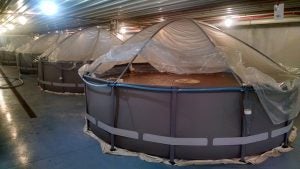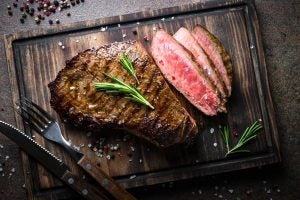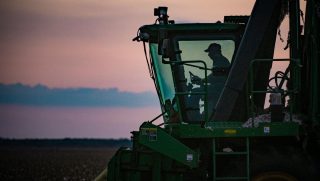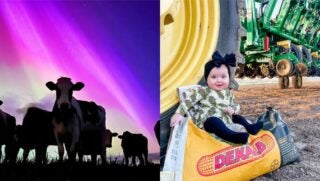If you work in agriculture or are a farmer, chances are you’ve been in a conversation with someone and they’ve had no idea what you’re talking about. Whether it was a simple mix up between what AI means (is it artificial intelligence, artificial insemination, or agricultural inputs?) or a more complex and technical term like permaculture, agriculture as a whole has a lot of jargon that can be hard to understand, even for people that already have some ag knowledge.
Let’s dive into some of the complicated terminology in farming and ranching and define some things that you may not be super familiar with:
- Permaculture: An approach to land management and settlement design that adopts arrangements observed in flourishing natural ecosystems.
- Sustainability: Meeting the needs of the present without compromising the ability of future generations to meet their needs. Sustainability isn’t just the environment, it also comprises nutritional and economic foundations.
- Aquaculture: The breeding, planting, rearing and harvesting of domesticated aquatic animals and plants in contained systems such as man-made ponds, outdoor raceways, indoor tanks or raceways, or protected in cages, net bags, or sea cages in coastal waters and oceans.

- Backgrounding: The feeding and management of meat animals from the time they are weaned as calves until they are on a finishing ration in the feedlot.
- Double Cropping: Raising two different crops on the same area within one growing season.
- Dry Matter: The part of animal feed that is not water.
- Everblooming: A flower that produces a continual supply of blooms throughout a season.
- Finishing: Refers to the process of feeding out feeder animals in a feedlot until they reach slaughter weight.
- Fungicide: A chemical substance used as a spray, dust, or disinfectant to kill fungi infesting plants, animals, or seed. Fungicides may be derived from natural (organic) or synthetic (inorganic) sources.
- Germinate: This is the beginning of growth in a seed. Otherwise it means when the seed sprouts.
- Muscling: The amount of lean meat in a slaughter animal or carcass. Muscling can also be estimated on live animals.
- Quality Grade: An evaluation of the degree of marbling (otherwise known as intramuscular fat) and degree of maturity affecting the tenderness, juiciness and favor of beef, pork or lamb. To put it simply, it’s a measure of the quality of the meat.

- Bioenergy: Renewable energy produced from biomass, which is organic material such as trees, plants and waste materials.
- Feed Efficiency: This compares the pounds of product produced per pound of matter consumed, which is also referred to as the feed to gain or gain to feed ratio. Again to put it simply, it’s how much weight is gained per amount of feed consumed. Beef, swine, fish, and poultry industries have used feed efficiency as a benchmark for profitability.
- Food Security: Food security for a household means access by all members at all times to enough food for an active, healthy life. Food security includes: having an availability of nutritionally adequate and safe foods and the ability to acquire foods in socially acceptable ways (this means without resorting to emergency food supplies, scavenging, stealing, or other coping strategies).
- Genetics and Genomics: Application of recombinant DNA, DNA sequencing methods, and bioinformatics to sequence, assemble, and analyze the function and structure of genomes. Genetics and genomes are looked at in many fields to determine what animals to breed to. There are many uses for genomics today.
- Nutrition Security: Consistent and equitable access to healthy, safe, affordable foods essential to optimal health and well-being.
- Precision Agriculture: Technological advances meant to propel agriculture into the computerized information-based world.
- Transgenic: Genetically modified organisms; an organism that has been generated by biotechnology.
And finally, let’s define agriculture itself (because the definition might be a little different than you think). Agriculture is the art and science of cultivating soil, producing crops, and raising livestock. Agriculture also includes the preparation and marketing of products that result from crops and livestock. Oftentimes we think of agriculture as only farming and ranching, when really it is so much more.
Michelle Miller, the “Farm Babe,” is an internationally recognized keynote speaker, writer, and social media influencer and travels full time to advocate for agriculture. She comes from an Iowa-based row crop and livestock farming background and now resides on a timber farm in North Central Florida.


